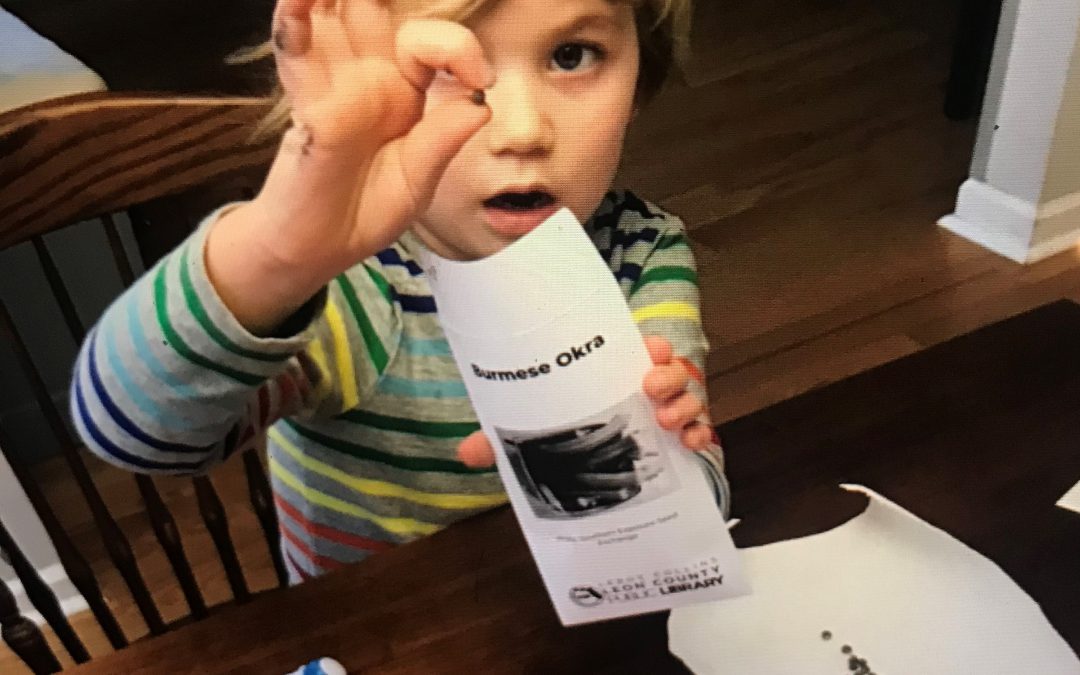
by Molly Jameson | Feb 11, 2021
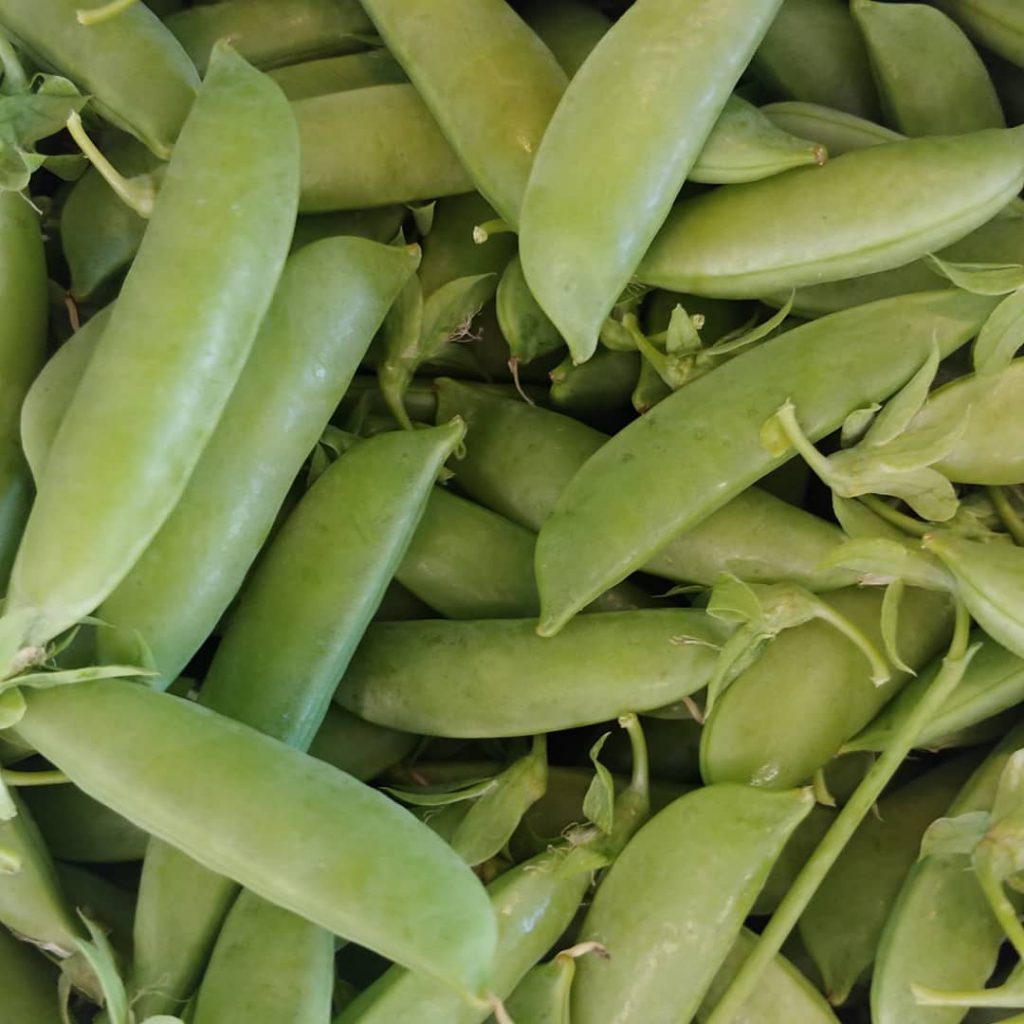
Sugar snap peas prefer to be planted when the soil is cool and the pods are delicious raw or cooked. Photo by Full Earth Farm.
Leon County’s Spring 2021 Seed Library Program Starts February 13
Although we are still experiencing the coolness of winter, the spring gardening season is right around the corner. To get a head start on the heat that will start taking over by May – and certainly by June – it is important to have a spring garden plan. If you want to start your veggies from seed, certain crops, such as tomatoes, need to be seeded soon for best results. Other warm-loving crops, like squash and cucumbers, also benefit from an early start to beat the life cycles of many common pests.
Need seeds to start your garden? Well, if you live in Leon County, you are in luck. Starting on February 13, 2021, residents of Leon County can “check out” up to three sample seed packets per month with their library card as part of Leon County’s Seed Library Program. The vegetable seeds can be checked out from any of the seven library branch locations. Leon County residents can apply for a library card online at the LeRoy Collins Leon County Public Library online card application page (https://lcpl.ent.sirsi.net/custom/web/registration/).
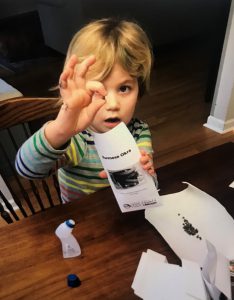
A young volunteer helped pack seeds from home for the Spring 2021 Leon County Seed Library Program. Photo by Jeanne Breland.
Here are the vegetable seed varieties that will be available starting February 13:
- Italian Large Leaf Basil. This is a fast-growing plant, with four-inch-long green leaves that have an anise flavor and a sweet aroma.
- Jackson Wonder Butterbeans. A high yielding heirloom, these beans produce pods with three to five reddish colored beans in each. When dried, the beans develop a mottled pattern.
- A & C Pickling Cucumber. Plants are productive, producing many straight, dark-green fruits that are great for pickling when they are four to six inches long. Eaten fresh, they can be grown out to 10 inches.
- Edisto 47 Melon. Plants prosper in hot, humid climates and produce mildly sweet five-pound cantaloupes in about 90 days.
- Burmese Okra. Plants have very large leaves and at about 18-inches tall, produce slender curved 9 to 12 inch okra pods that are virtually spineless. Under 10 inches, pods can be eaten raw and are less viscous than some other varieties.
- Sugar Snap Peas. Plants produce sweet, crisp pods that can be eaten raw or cooked. Seeds germinate well in cool soil and plant growth is vigorous, requiring support.
- Corno di Toro Sweet Bell Pepper. This productive pepper, whose name translates to “Horn of the Bull,” produces thick horn-shaped fruit that is flavorful and great eaten raw or cooked.
- Butternut Waltham Squash. This winter squash produces four-to-five-pound fruits with necks that are thick, straight, and cylindrical. The flesh of the fruit is smooth and has a flavor that sweetens with storage.
- Black Krim Tomato. This Russian heirloom has indeterminate growth and produces 8 to16 ounce, brown-to-red fruit with a deep smoky flavor. The shoulders of the tomatoes are brownish green and darken with more heat and sunlight.
- Matt’s Wild Cherry Tomato. This deep-red small cherry tomato has indeterminate growth and produces soft fruit that is very sweet and full of flavor.
Whether you are located in Leon County or not, everyone is welcome to join us Saturday, February 13, from 10:00 a.m. to 12:00 p.m., for our Leon County Seed Library Virtual Workshop. Via Zoom, agents with UF/IFAS Extension Leon County will discuss spring vegetable gardening techniques and food waste prevention. There will also be a live cooking demonstration showing how to prepare healthy meals and snacks at home, featuring vegetables available in the Spring 2021 Seed Library Program.
For more information about the Leon County Seed Library Virtual Workshop, please visit our Eventbrite page: https://spring2021leoncountyseedlibrary.eventbrite.com. There is no cost to attend the workshop, but registration is required.
Happy spring gardening!
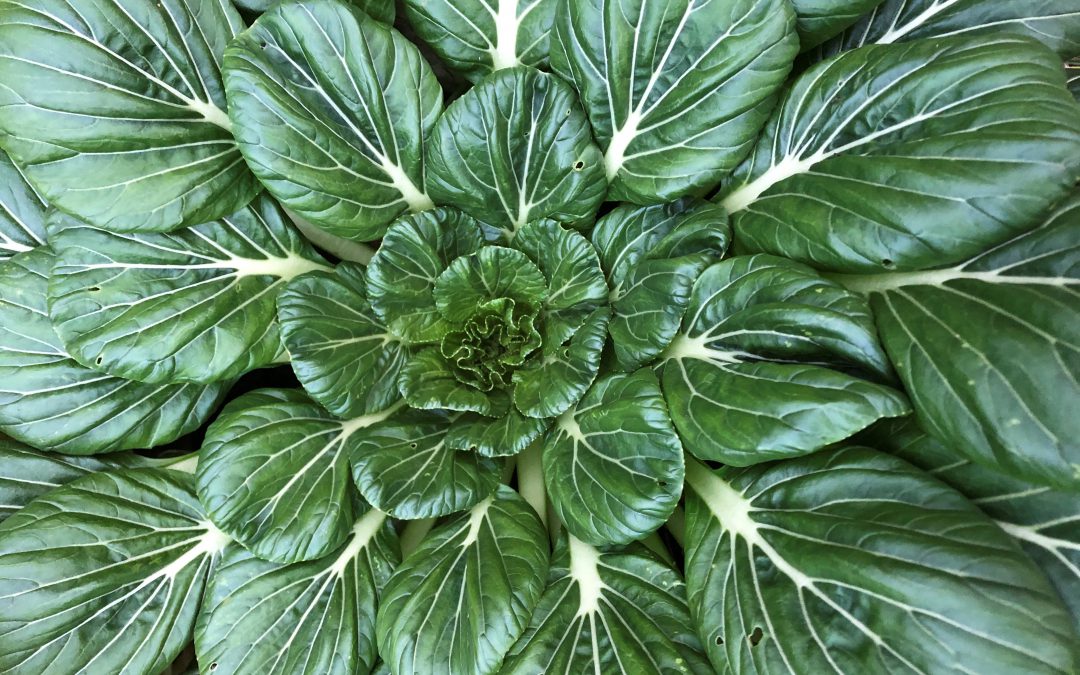
by Molly Jameson | Dec 16, 2020
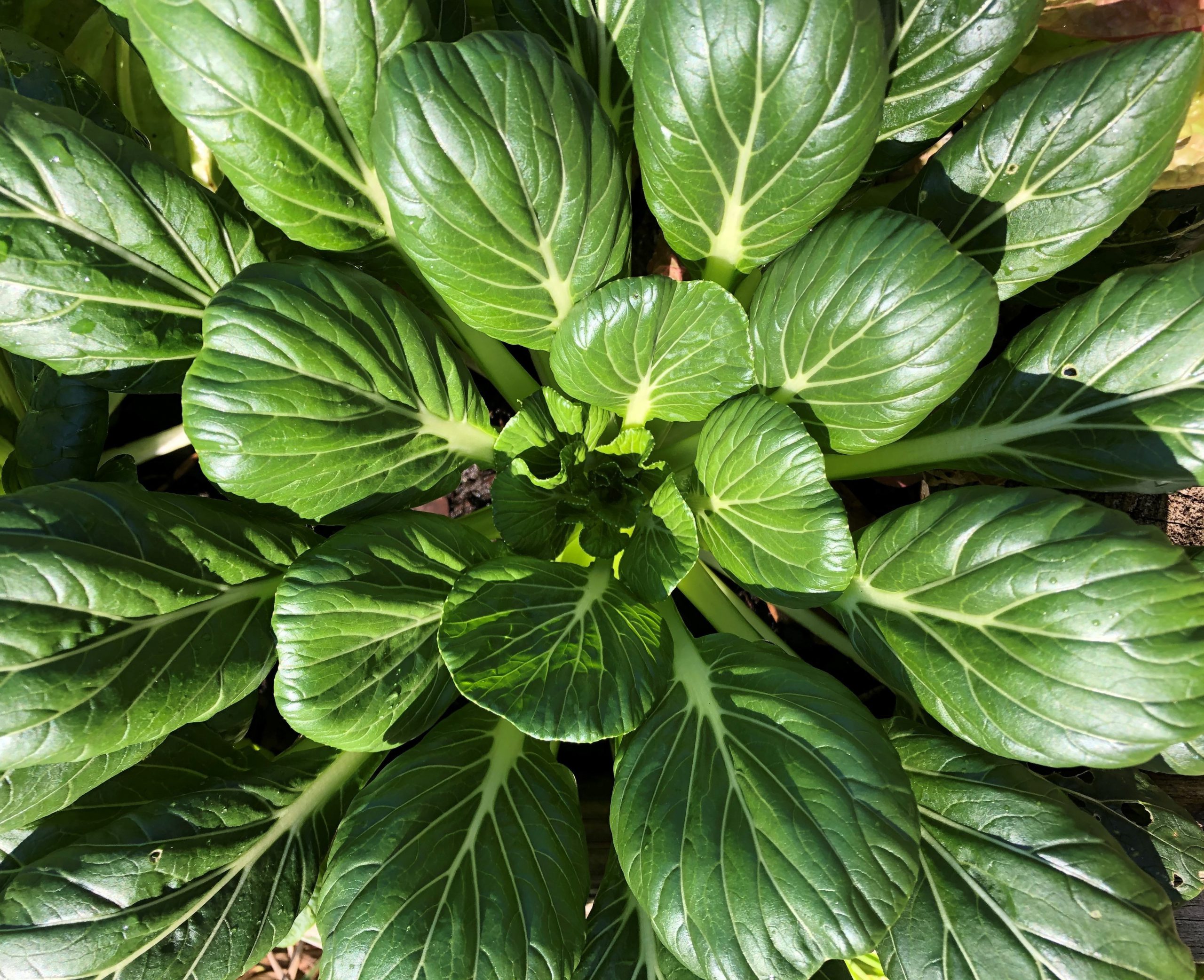
Tatsoi is a low-growing green with spoon-shaped, dark-green leaves. Photo by Molly Jameson.
Sweet to the palate, easy to grow, and a delight to watch take shape, tatsoi is a great choice for your fall and winter veggie garden.
Tatsoi is in the cabbage family, species Brassica rapa, and is closely related to another Asian green, bok choy. It originates in Japan, where it has been grown for over 1,500 years.
Tatsoi is an annual with spoon-like dark-green leaves and cream-colored stems that grows low to the ground. It is easy to start from seed, can handle partial shade, and grows relatively fast. It can be eaten raw, like spinach, or it can be lightly cooked to add a pleasantly distinct flavor to stir-fries and soups. It has a surprisingly mild mustard-like taste. It is full of vitamin C, calcium, potassium, folate, and phytonutrients.
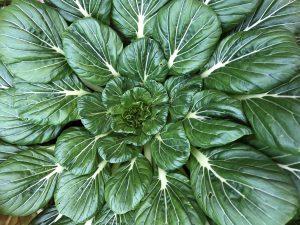
Tatsoi takes about 40 to 50 days to reach maturity. Photo by Molly Jameson.
Although it does well in the spring in cooler climates, it does best in fall and winter in Florida and can handle temperatures down to 15°F. It can be directly seeded into the garden and germinates in about five to 15 days. You can seed tatsoi one to three inches apart, but it should be thinned to about eight to 10 inches to reach full size, which takes about 40 to 50 days. Add the baby tatsoi you thin to your dinner salad.
Once thinned, harvest whole mature plants or individual outer leaves. If you find you just can’t get enough, seed more tatsoi every two weeks until the spring, when longer days and warmer temperatures will cause tatsoi to bolt. Bolting is when a plant diverts its resources away from the edible leaves and into the flowering stem for seed production.
For a truly continuous supply, allow your tatsoi to bolt, and it will produce many tiny, thin seed pods. Wait for the plant to dry completely and harvest the seed pods. Carefully open the pods over a plate to be sure to catch all the small round seeds within. Then, simply store the seeds in a dry, cool location, such as your fridge, in an air-tight container. Stored correctly, the seeds will last four to five years.
If you have yet to give tatsoi a position in your garden, give it a try this winter!
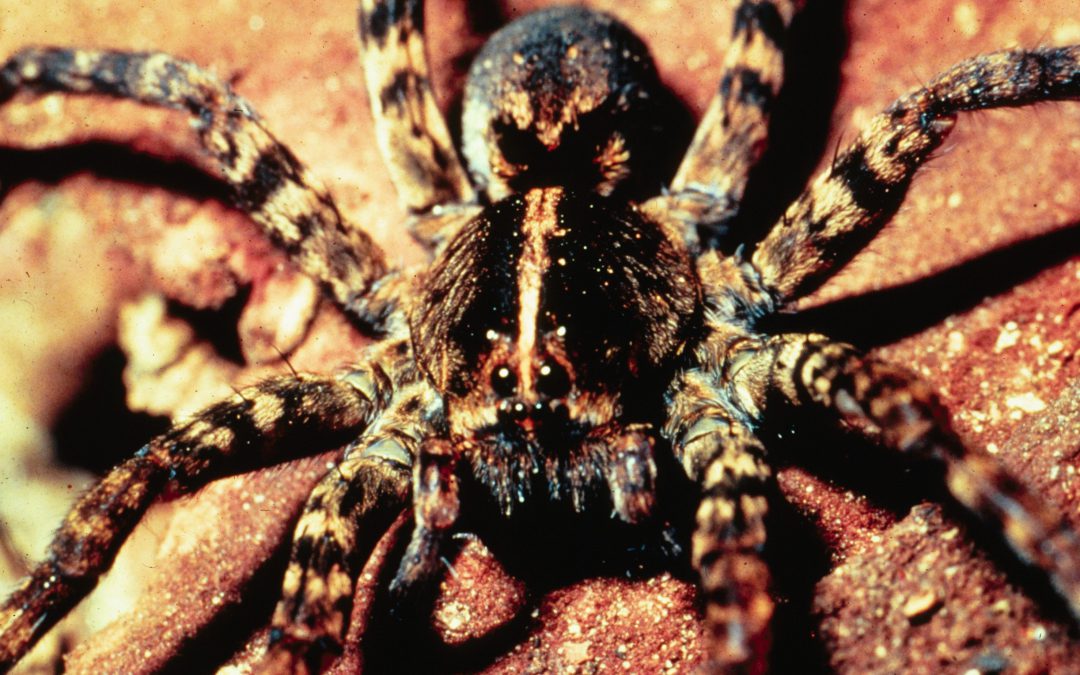
by Molly Jameson | Oct 28, 2020
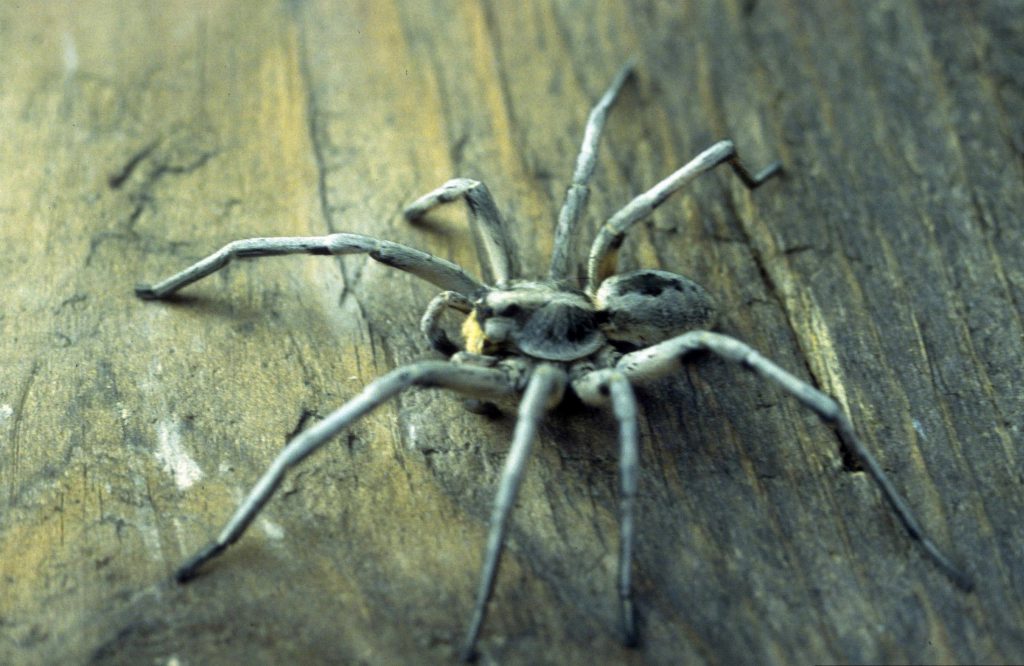
The Carolina wolf spider (Hogna Corolinensis) is the largest wolf spider, measuring up to 22-35 mm. It is the state spider of South Carolina, the only state that recognizes a spider as a state symbol. Photo by Eugene E. Nelson, Bugwood.org.
Halloween coincides with a full moon this year, so you may want to be on the lookout for hungry werewolves. In your garden, you may also be on the lookout for a much smaller, yet just as frightful, type of wolf. Well – wolf spider, that is!
But have no fear, just as the little werewolves of the neighborhood will be sated by a handful of sweets, a wolf spider will be satisfied once it finds its meal of choice. Wolf spiders are predators, feeding primarily on insects and other spiders. Much like a werewolf, wolf spiders prefer to stalk their prey at night. This is good news for gardeners – as it means you’ll have an insect hunter working for you while you sleep.
Wolf spiders are in the family Lycosidae, and there are over 2,000 species within this family. Lycos means “wolf” in Greek, inspired by the way wolves stalk their prey. Although, unlike wolves who hunt in packs, wolf spiders are very much solitary. These spiders do not spin webs; instead, they keep to the ground, where they can blend in with leaf litter on the soil floor. Some wolf spiders even dig tunnels, or use tunnels dug by other animals, to hide and hunt.
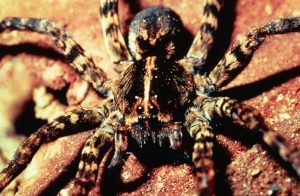
Although most spiders have poor eyesight, wolf spiders have excellent vision, which they use to spot prey. Photo by James O. Howell, University of Georgia, Bugwood.org.
Wolf spiders have eight eyes that are arranged in three rows. This includes four small eyes in the lowest row, two very large eyes in the middle, and two medium-sized eyes off to either side on top. Some of their eyes even have reflective lenses that seem to sparkle in the moonlight. Using their excellent eyesight and sensitivity to vibrations, they stealthily stalk prey such as ants, grasshoppers, crickets, and other spider species. Female wolf spiders, which are bigger than males, may even take down the occasional lizard or frog.
No matter the meal, many wolf spiders pounce on their prey, hold it between their eight legs, and roll with it onto their backs, creating a trap. They then sink their powerful fangs, which are normally retracted inside the jaw, into the victim. The fangs have a small hole and hollow duct, which allows venom from a specialized gland to pass through during the bite. This venom quickly kills the prey, allowing the wolf spider to eat in peace.
Although wolf spiders could bite a person if threatened, they prefer to run away, and their venom is not very toxic to humans. If you do get bitten, you may have some swelling and redness, but no life-threatening symptoms have been reported. Werewolves on the other hand? For these, you’re on your own!
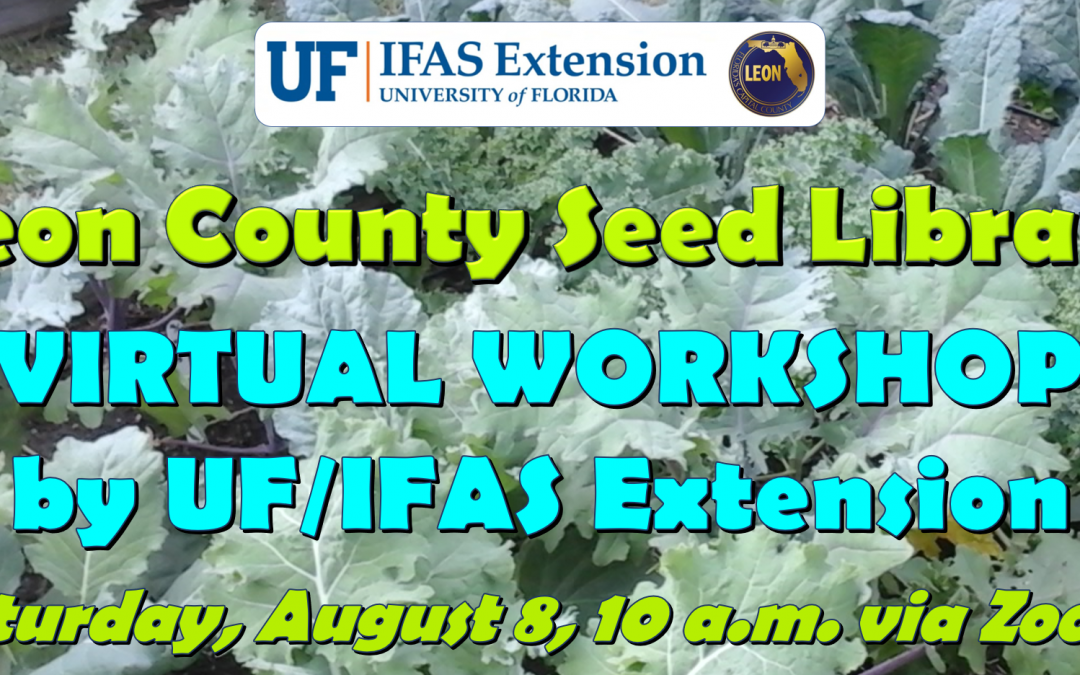
by Molly Jameson | Jul 23, 2020
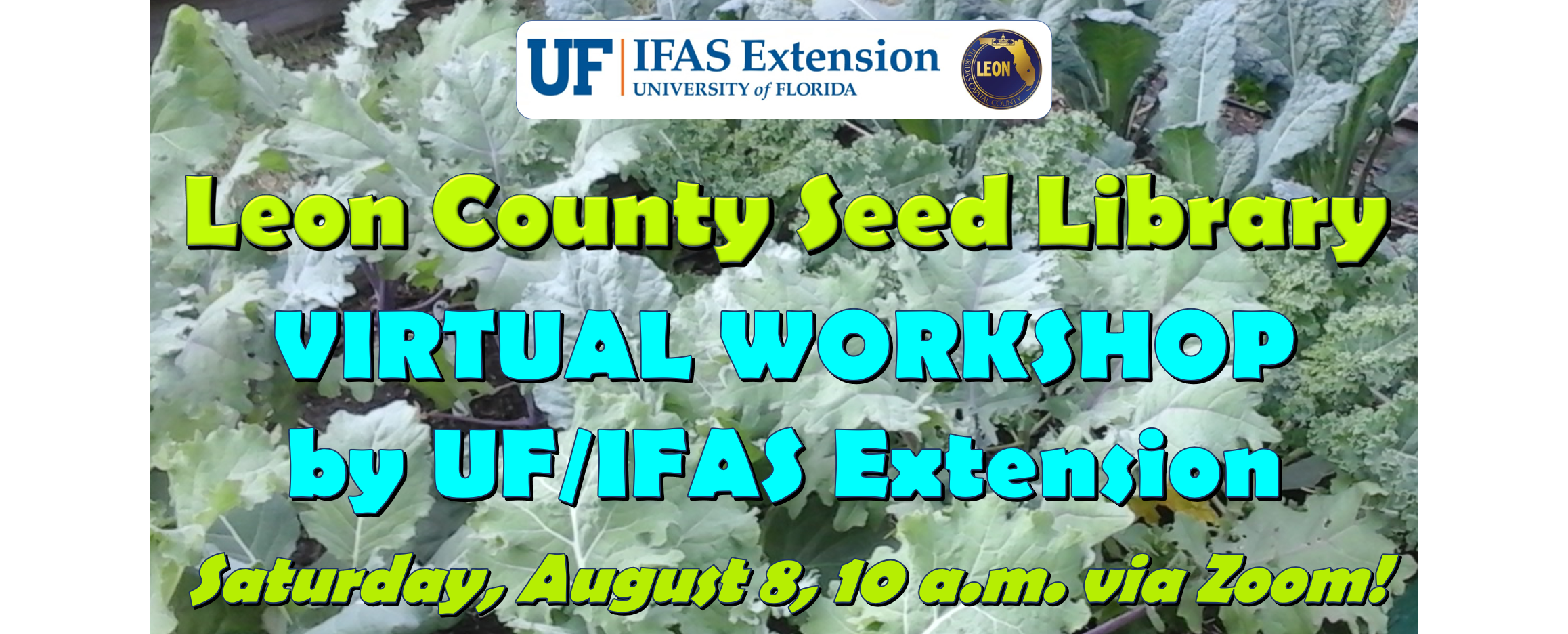
Join us via Zoom on Saturday, August 8, for our Leon County Seed Library Virtual Workshop. Graphic by Molly Jameson.
Leon County’s Seed Library Program Continues On
The COVID-19 pandemic has changed many aspects of our lives. In Extension, we have learned new ways to be innovative in our programs, and we have made adaptations to continue to reach the community through technology. While these technologies have allowed us the opportunity to connect with clientele and continue to allow important discussions related to the life sciences, there is no substitute for hands-on learning.
For this reason, I am thankful that the Leroy Collins Leon County Public Library System is proceeding with the Leon County Seed Library Program this fall. Since the spring of 2015, the Leon County Public Library has provided Leon County community members with sample vegetable seed packets to take home and plant in their gardens. While many aspects of the Seed Library Program will be altered this season, seeds will still be available to be “checked-out” from all Leon County library branches.
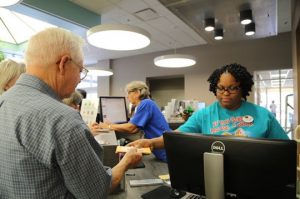
While face coverings and other safety precautions will be required, Leon County residents can still “check-out” seeds starting August 8. Photo by the Leon County Public Library.
As we continue to strive to keep ourselves and our community safe, many of us have used gardening as a way to relax and find some peace during these turbulent times. Planting vegetable seeds is a great way to learn about agriculture and our natural environment and gives us an opportunity to spend some time outdoors.
As an Extension Agent in Leon County, I have had the pleasure of partnering with the Leon County Library to help pick out the Seed Library Program seed selections, plan kickoff events, and provide hands-on workshops at various library branches. While “checking-out” seeds at the library this season will be a socially distanced activity, we still want to provide an opportunity for the community to engage with UF/IFAS Extension and learn about planting seeds, growing vegetables, and how to incorporate vegetables into snacks and meals to stay healthy.
Whether you are located in Leon County or not, everyone is welcome to join us Saturday, August 8, from 10:00 a.m. to 12:00 p.m., our Leon County Seed Library Virtual Workshop. Via Zoom, agents with UF/IFAS Extension Leon County will discuss vegetable gardening techniques and the importance of eating healthfully. We will also be doing a live virtual cooking demonstration featuring vegetables available in the Fall 2020 Seed Library Program.
For more information about the Leon County Seed Library Virtual Workshop, please visit our Eventbrite page: https://seedlibraryworkshop2020.eventbrite.com. There is no cost to attend the workshop, but registration is required.
If you are a resident of Leon County, all you need is your Leon County library card to check-out the vegetable seeds. Don’t have a library card? No problem! Leon County residents can apply online at the LeRoy Collins Leon County Public Library online card application page here: https://lcpl.ent.sirsi.net/custom/web/registration/.
Here is the list of the vegetable seeds that will be available starting August 8: Calabrese Broccoli, Cosmic Purple Carrots, Georgia Green Collards, Lacinato Kale, Buttercrunch Bibb Lettuce, Giant of Italy Parsley, Easter Egg Radishes, and Silverbeet Swiss Chard.
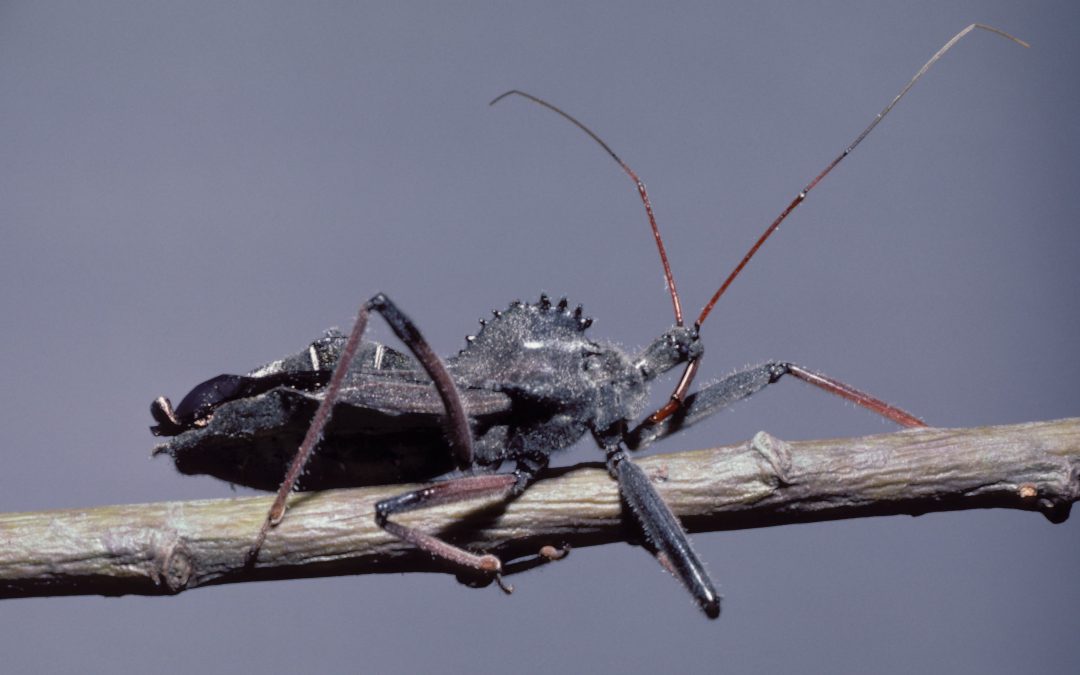
by Molly Jameson | Jun 11, 2020
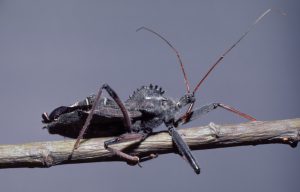
Wheel bugs have large beaks and a distinctive semicircular crest on their backs resembling a cogwheel. Photo by Gerald J. Lenhard, Louisiana State University, Bugwood.org.
As a gardener, the summer is the season you might feel it takes knightly status to grow fruits and vegetables. You put on your metaphorical armor, hold up your shield, and draw your sword to battle the stink bugs, squash vine borers, armyworms, green peach aphids, and more.
In these instances, it may feel like nothing in nature is on your side. But alas, there are a few insects out there that carry their own defenses. One of them is the ferocious assassin bug. These insects are predacious, loaded with powerful curved beaks called proboscises that pierce their unsuspecting prey. Once pierced, the assassin bug injects a toxin that liquefies the muscles and tissues of the prey. It then sucks out the liquefied tissue, killing its host.

Although milkweed assassin bugs vary in appearance worldwide, those found in the United States are distinctly orange and black. Photo by Gerald J. Lenhard, Louisiana State University, Bugwood.org.
Assassin bugs feed on a wide range of insects, including many types of caterpillars, stinkbugs, aphids, flies, beetles, and even mosquitoes.
While assassin bugs are our garden allies, be mindful, as their injection does pack quite the punch! Fortunately, although a “bite” from an assassin bug is painful, they do not generally require medical attention. But do seek medical attention if it causes any type of allergic reaction such as swelling, itching, hives, or difficulty breathing.
There are nearly 3,000 known assassin bug species, including many in Florida. Common species you may come across in your Florida garden are the wheel bug (Arilus cristatus) and the milkweed assassin bug (Zelus longipes). Give them their space but know that they are on your side.
Learn more about wheel bugs and milkweed assassin bugs at the UF/IFAS Featured Creatures website:















